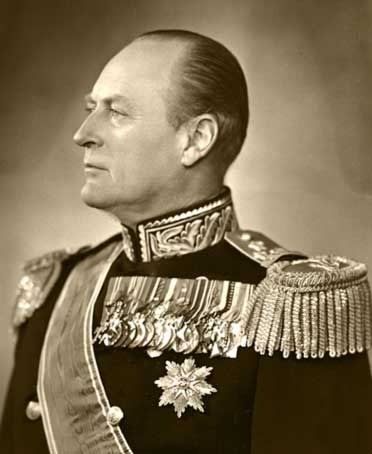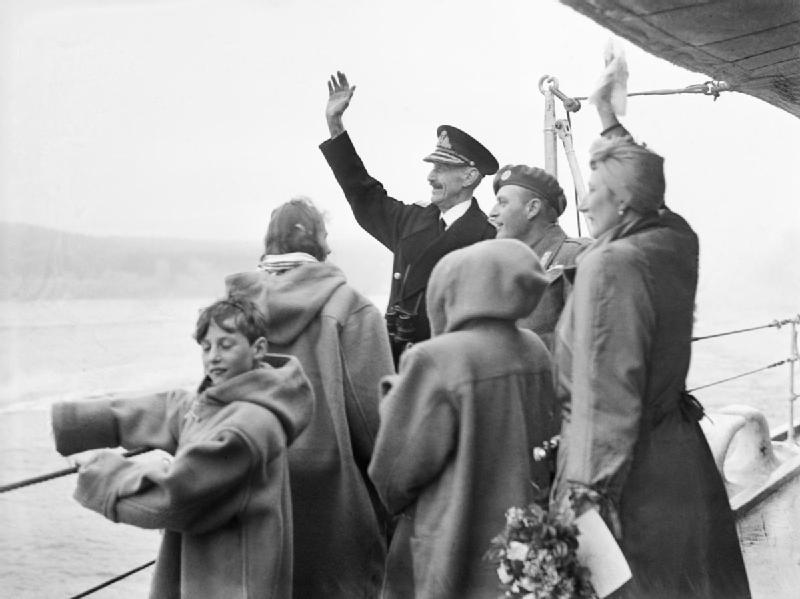by Scott Mehl © Unofficial Royalty 2014

King Olav V of Norway; Credit – Wikipedia
King Olav V of Norway was born Prince Alexander Edward Christian Frederik of Denmark on July 2, 1903, at Appleton House on the Sandringham Estate in the United Kingdom. He was the only child of Prince Carl of Denmark, the future King Haakon VII of Norway, and Princess Maud of Wales. Olav was the paternal grandson of King Frederik VIII of Denmark and Princess Louise of Sweden, and the maternal grandson of King Edward VII of the United Kingdom and Princess Alexandra of Denmark.
When Olav was born, there was little expectation that he would become a king. However, this would all change in 1905, when his father was named the new King of Norway, taking the name Haakon VII. Two-year-old Alexander was given the more Norwegian name Olav and became Crown Prince of Norway.

Crown Prince Olav, circa 1912. Photo: The Royal House of Norway, Court Archives
Following his elementary education, Olav attended the Norwegian Military Academy, graduating in 1924, and then studied law and economics at Balliol College, Oxford University, graduating in 1926. An avid skier and sailor, Olav represented Norway in the 1928 Olympic Games, winning a Gold Medal in the sailing competition, and remained active in sailing his whole life.

Crown Prince Olav served in the Norwegian Armed Forces, first in the navy and then the army, working to the rank of Colonel by 1936. In 1939, he was appointed Admiral of the Norwegian Royal Navy and General of the Royal Army. His extensive military training would serve him well in the coming years, as the Nazis began their takeover of Europe.
On March 21, 1929, at the Oslo Cathedral in Oslo, Olav married his first cousin, Princess Märtha of Sweden.
The couple took up residence at the Skaugum Estate in Asker, Norway, and had three children:
- Princess Ragnhild (1930 – 2012), married Erling Lorentzen, had three children
- Princess Astrid (born 1932), married Johan Ferner, had five children
- King Harald V (born 1937), married Sonja Haraldsen, had two children

Olav, his wife, and children; Photo Credit – Wikipedia
In April 1940, when the Germans invaded Norway, the Norwegian government and the Royal Family were forced from Oslo. Olav’s wife and children went first to Sweden, and then, at the invitation of President Franklin D. Roosevelt, sailed for the United States, where they remained for the duration of the war. King Haakon VII, Crown Prince Olav, and the government established themselves in Elverum, in Eastern Norway. However, it soon became clear that they would be unable to withstand the German forces. On June 7, 1940, King Haakon and Crown Prince Olav sailed for England, where they established a government-in-exile in London. From London, they continued to rally and support the Norwegian people. In 1944, Crown Prince Olav was appointed Chief of Defense and took the lead of the Norwegian forces, working with the Allied Forces.

The reunited Norwegian royal family returned to Oslo in June 1945. photo: Wikipedia
On May 13, 1945, just five days after the Germans surrendered, Olav and several government ministers returned to Norway. The King, as well as Olav’s wife and children, returned the following month.
In April 1954, Olav’s wife, Crown Princess Märtha, died of cancer, having been ill for some time. Three years later, Olav became King Olav V of Norway after his father, King Haakon VII, died on September 21, 1957. Olav, already much loved by the Norwegian people, became even more popular during his reign. He was often found, unaccompanied, among his people, driving around town, stopping in shops, and taking the train to the ski slopes, gaining him the nickname “The People’s King”.
King Olav V died of a heart attack on January 17, 1991, at the Royal Lodge (Kongsseteren) in Holmenkollen, Oslo, Norway. He was buried with his wife in the green sarcophagus alongside his parents in the Royal Mausoleum at the Akershus Fortress in Oslo, Norway.

White tomb of King Haakon VII and Queen Maud on the left and green tomb of their son King Olav V and his wife Princess Märtha of Sweden, Crown Princess of Norway on the right; Photo Credit – Susan Flantzer
This article is the intellectual property of Unofficial Royalty and is NOT TO BE COPIED, EDITED, OR POSTED IN ANY FORM ON ANOTHER WEBSITE under any circumstances. It is permissible to use a link that directs to Unofficial Royalty.
Kingdom of Norway Resources at Unofficial Royalty
- Kingdom of Norway Index
- Norwegian Monarchs
- Norwegian Orders and Honours
- Norwegian Royal Burial Sites
- Norwegian Royal Christenings
- Norwegian Royal Dates
- Norwegian Royal FAQs
- Norwegian Royal Residences
- Norwegian Royal Trivia
- Norwegian Royal Weddings
- Line of Succession to the Throne of Norway
- Profiles of the Norwegian Royal Family

